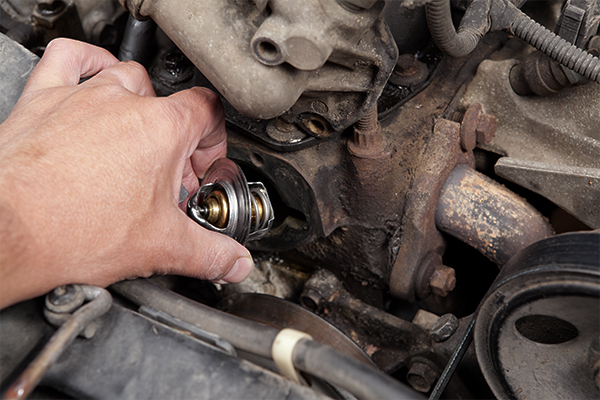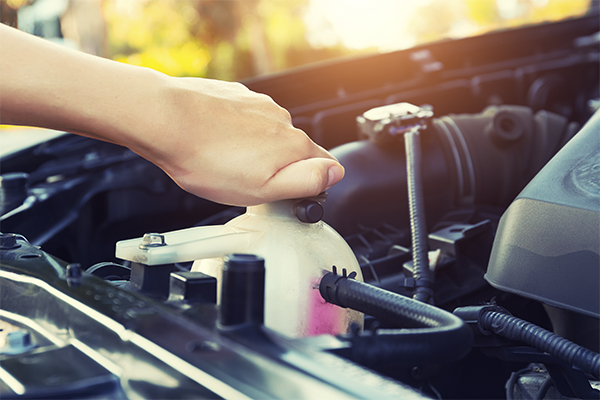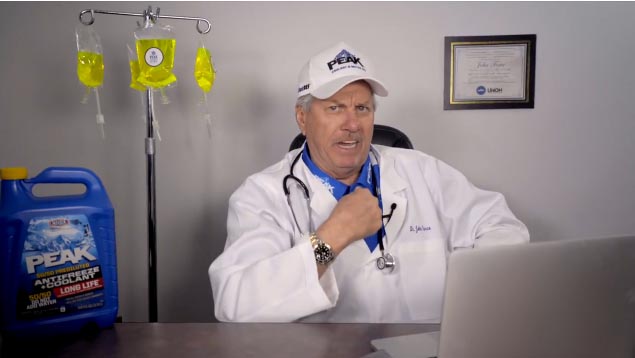Your car's thermostat plays a vital role in regulating the flow of coolant through the engine and keeping the engine at normal operating temperature.
The thermostat is a simple little device that sits in housing near a cylinder head or the intake manifold, right in the flow of coolant from the primary hose to the radiator. When it's operating like it should, it stays closed and shuts off flow of coolant to and from the radiator until the engine reaches normal operating temperature. When coolant reaches a specified temperature, a bimetallic strip in the thermostat causes it to open and allow coolant to circulate to and from the radiator, keeping the engine at a uniform temperature.
When the thermostat is stuck shut, that circulation from the water pump through the engine and back to the radiator can't happen, and your engine will soon overheat. If the thermostat sticks in the open position, the engine will never warm up to operating temperature, meaning the heater won't work properly and the car won't perform well in general.
If you're on the verge of thermostat failure, you can expect:
- Overheating
- Temperature gauge that varies erratically from low to abnormally high and back again
- Coolant leaks around the thermostat housing or under the vehicle
- Engine that never warms up completely or takes a long time to do so
The good news is that on most vehicles, replacing a thermostat is a fairly simple and inexpensive job. The even better news is that your coolant includes anticorrosion agents that can protect the thermostat, water pump, radiator, and all other parts of your cooling system—and with regular cooling system maintenance, your chances of thermostat failure drop considerably.
Let's let Dr. Coolant (John Force) tell us more about thermostat failure.








